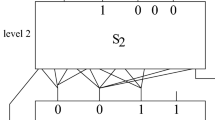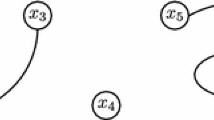Abstract.
We study three types of self‐reducibility that are motivated by the theory of program verification. A set A is random‐self‐reducible if one can determine whether an input x is in A by making random queries to an A‐oracle. The distribution of each query may depend only on the length of x. A set B is self‐correctable over a distribution \({\cal D}\) if one can convert a program that is correct on most of the probability mass of \({\cal D}\) to a probabilistic program that is correct everywhere. A set C is coherent if one can determine whether an input x is in C by asking questions to an oracle for C–{x}.¶We first show that adaptive coherence is more powerful than nonadaptive coherence, even if the nonadaptive querier is nonuniform. Blum et al.(1993) showed that every random‐self‐reducible function is self‐correctable. It is unknown, however, whether self‐correctability implies random‐self‐reducibility. We show, assuming a reasonable complexity‐theoretic hypothesis, that certain hard, sparse, tally sets exist, and that there is a self‐correctable function which is not random‐self‐reducible. For easily samplable distributions, however, we show that constructing a self‐correctable function that is not random‐self‐reducible is as hard as proving that P is different from PP.
Similar content being viewed by others
Author information
Authors and Affiliations
Additional information
Received: 14 June, 1996
Rights and permissions
About this article
Cite this article
Feigenbaum, J., Fortnow, L., Laplante, S. et al. On coherence, random-self-reducibility, and self-correction. Comput. complex. 7, 174–191 (1998). https://doi.org/10.1007/s000370050009
Issue Date:
DOI: https://doi.org/10.1007/s000370050009




